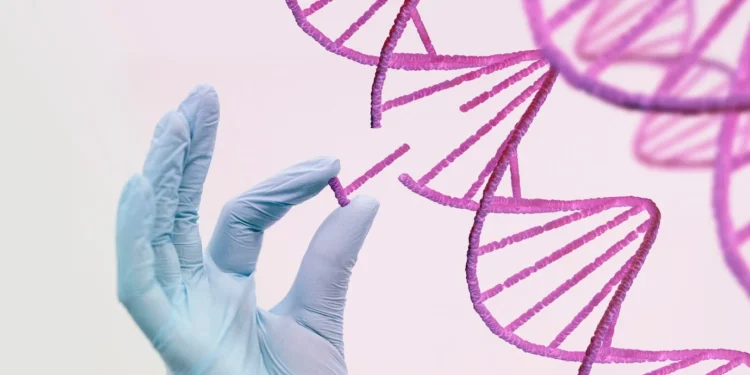In recent years, genetic testing has become a powerful tool in discovering family history, understanding health risks, and gaining insights into various aspects of our genetic makeup. With companies like AncestryDNA and 23andMe offering consumers the opportunity to explore their genetic information, it’s no surprise that many are interested in maximizing the value of their results. One of the ways to do so is by utilizing a process called a raw DNA upload, which allows users to take their genetic data from one platform and upload it to another for further analysis and insight.
In this article, we’ll explore the concept of raw DNA uploads, the process of upload ancestry dna to 23 and me, and the benefits and potential drawbacks of these actions. Whether you’re new to genetic testing or already a seasoned genealogist, this guide will provide you with the information you need to make the most of your DNA data.
What is a Raw DNA Upload?
When you take a genetic test through companies like AncestryDNA or 23andMe, they analyze your saliva sample (or another biological sample) to generate raw genetic data. This raw data consists of millions of data points derived from your DNA, which are then processed and presented in the form of reports on ancestry, health, traits, and more.
However, the raw genetic data is far more detailed than what you see in the reports. It includes information such as Single Nucleotide Polymorphisms (SNPs), which are variations in your DNA that can have an impact on various characteristics or health conditions.
A raw DNA upload allows you to take this raw genetic data and upload it to another platform or service that supports this type of information. The primary purpose of this upload is to gain access to more genetic insights or connect with additional databases. For example, many users choose to upload their raw DNA to other platforms like 23andMe, MyHeritage, or GEDmatch to access different ancestry reports, health data, or even discover distant relatives who have also uploaded their data.
Why Upload Your Raw DNA?
Uploading raw DNA data is a popular practice for several reasons, and many individuals do so to expand their understanding of their genetic makeup. Here are some of the key benefits of uploading your raw DNA:
- Access to Additional Features: Different DNA testing services offer unique features, reports, and tools. For instance, while AncestryDNA is focused heavily on building family trees and connecting you to distant relatives, 23andMe provides in-depth health reports based on genetic data. By uploading your raw DNA from AncestryDNA to 23andMe, you can access 23andMe’s health-related genetic reports and traits analysis, which might not be available through AncestryDNA.
- Finding Relatives: Many people upload their raw DNA to multiple platforms to increase their chances of finding relatives who have tested with different services. If you’ve taken an AncestryDNA test, uploading that data to 23andMe allows you to see potential matches with others who have taken a 23andMe test. The more platforms your DNA is available on, the more likely you are to make connections with distant relatives, even those you may not have known existed.
- Comparing Results: By uploading raw DNA to different platforms, you can compare the genetic results and insights from each service. This can provide you with a more comprehensive understanding of your ancestry, health risks, and traits. Each company uses its own algorithms, databases, and tools to analyze DNA, which can result in slightly different interpretations of the same data.
- Third-Party Tools and Apps: Several third-party apps and websites allow users to upload their raw DNA data for additional analysis. These tools can help you explore specific genetic traits or provide more detailed insights into areas like health risks, genetic predispositions, and ancestral origins. For example, tools like Promethease and DNA.Land offer reports based on raw DNA uploaded from various platforms.
How to Upload Ancestry DNA to 23andMe
Now that you understand the benefits of uploading raw DNA, let’s walk through the steps of how to upload your Ancestry DNA to 23andMe.
Step 1: Obtain Your Raw DNA Data from AncestryDNA
The first step in the process is obtaining your raw DNA file from AncestryDNA. After taking the AncestryDNA test, follow these steps:
- Log in to your Ancestry account.
- Click on the “DNA” tab in the top menu and then select “Your DNA Results Summary.”
- Scroll down to find the “Download Raw DNA Data” option.
- Follow the prompts to download your raw DNA file, which will typically be in a .txt format.
Step 2: Create a 23andMe Account (If You Don’t Already Have One)
If you haven’t already created an account with 23andMe, now is the time to do so. Visit the 23andMe website and sign up for an account. If you’ve already taken a test with 23andMe, you can simply log in to your existing account.
Step 3: Upload Your Raw DNA Data to 23andMe
Once you’ve logged into your 23andMe account, follow these steps:
- Navigate to the “Settings” section by clicking on your account name in the top-right corner.
- Under the “DNA” section, you will find the option to upload raw DNA data.
- Click on the option to “Upload Raw DNA Data” and select the file you downloaded from AncestryDNA.
- Follow the on-screen prompts to complete the upload process. The process may take several minutes.
Step 4: Review Your Results
After the upload is complete, 23andMe will process your raw DNA data and provide you with new reports, including ancestry information, health reports, and traits. These results will be available on your 23andMe dashboard. Keep in mind that this process can take a few hours to a few days, depending on the platform’s load.
Benefits of Uploading Ancestry DNA to 23andMe
- Expanded Insights: By uploading your Ancestry DNA to 23andMe, you gain access to a new set of reports and insights. 23andMe offers detailed reports on genetic health risks, carrier status for certain conditions, and even insights into traits such as lactose intolerance and eye color.
- Health Reports: 23andMe’s health-related reports are one of the platform’s most popular features. They offer an overview of genetic predispositions to certain health conditions like Parkinson’s disease, Alzheimer’s, and genetic carrier status for inherited diseases.
- DNA Relatives: 23andMe has an extensive database of users who have also taken genetic tests. Uploading your Ancestry DNA gives you the chance to connect with new genetic relatives who have tested with 23andMe, expanding your family tree and potential connections.
Potential Drawbacks
While uploading your raw DNA can offer various benefits, it’s important to be aware of some potential downsides:
- Privacy Concerns: Uploading raw DNA to multiple platforms means that your genetic information is stored in multiple databases. While companies take measures to protect your privacy, there’s always a risk of a data breach or misuse of your information.
- Inconsistent Results: Different platforms may analyze your DNA using different methods, algorithms, or reference populations, which could lead to inconsistencies between the reports on each platform. It’s important to understand that the results are not always directly comparable.
- Processing Fees: While uploading raw DNA data is typically free on platforms like 23andMe, certain services or third-party tools may charge fees for enhanced reports or access to additional features.
Conclusion
The ability to upload raw DNA data from one platform to another, such as uploading Ancestry DNA to 23andMe, offers consumers an expanded array of genetic insights, health reports, and family connections. By doing so, you can gain a more comprehensive understanding of your genetic makeup, health risks, and ancestral origins. However, it’s important to weigh the benefits against potential privacy concerns and the inconsistencies that may arise when comparing results from different platforms.
Whether you’re seeking to enhance your genealogy research, uncover new relatives, or delve deeper into your genetic health, uploading your raw DNA data is a great way to maximize the value of your genetic testing experience.




























